#pythonidae
Text

Boelen’s Python (Simalia boeleni), family Pythonidae, endemic to New Guinea
photograph by Tara Biron
3K notes
·
View notes
Text
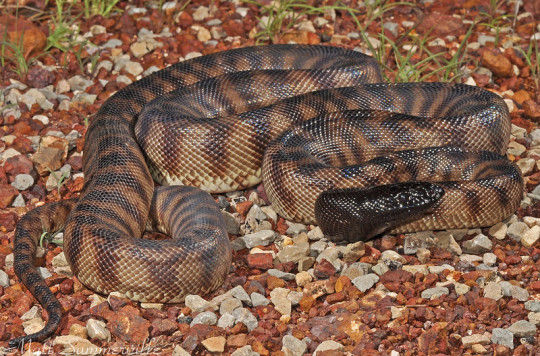
A black-headed python (Aspidites melanocephalus) at Daly Waters, Northern Territory, Australia
by Matt Summerville
#black headed python#pythons#snakes#reptiles#aspidites melanocephalus#aspidites#pythonidae#serpentes#squamata#reptilia#chordata#wildlife: australia#wildlife: oceania
79 notes
·
View notes
Text

Sumatran Short Tail Python (Python curtus), Aceh Province variety, family Pythonidae, from Sumatra, Indonesia
photograph by AC Exotics
67 notes
·
View notes
Photo
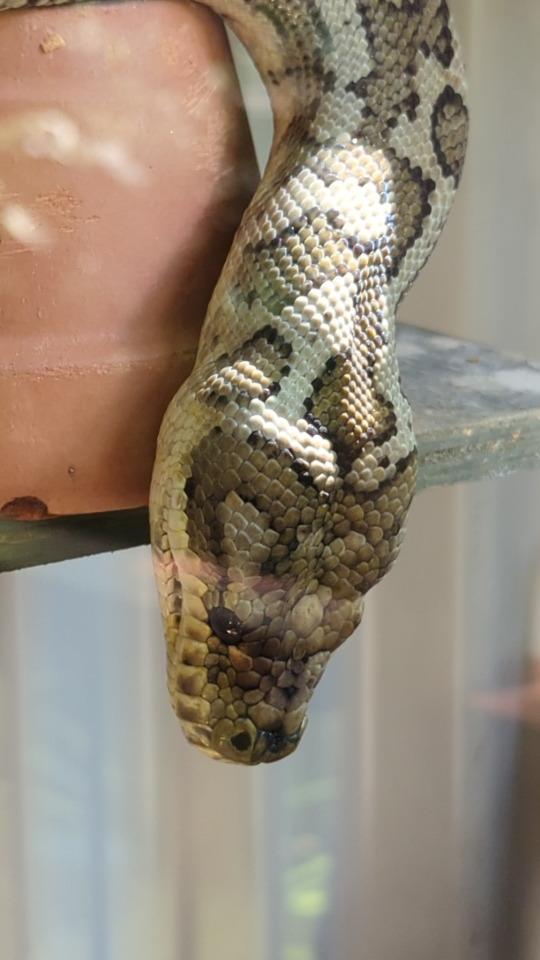
I took this photo in a zoo, but I still think it’s worth sharing.
Keep an eye out for these snakes, if you’re a chicken owner like myself.
Morelia spilota
25/05/22
#Carpet Python#Morelia spilota#other animals#Morelia#Chordata#Chordates#Vertebrata#Vertebrates#Reptilia#Squamata#Serpentes#Pythonidae#pythons#snakes#reptiles
5 notes
·
View notes
Photo

Become a Full Stack Python Expert in just 3 months…
If you’re looking for that perfect opportunity to make it big, join our career changing Python Program
Attend a FREE Demo on Python and find the Right Python Course to fit your Programming Needs.
We have both Offline and Online Training.
Enroll now for the new batch starts on 7th Oct 2022
Contact us: 81437 41509, 8106961963
#python#pythons#pythoncode#pythonregius#pythonbag#pythonskin#pythonprogramminglanguage#pythonclutch#pythondeveloper#pythonsofig#pythonbags#pythonista#pythonjacket#pythonprogramming#python3#pythonlanguage#pythonidae#pythonleejackson#pythonbelt#pythonmorph#pythontherider#pythonshoes#pythonchallenge#pythoncurtus#pythonsunlimited#pythonboots#pythonsofinsta#pythonroyal
0 notes
Photo

Become a Full Stack Python Expert in just 3 months…
If you’re looking for that perfect opportunity to make it big, join our career changing Python Program
Attend a FREE Demo on Python and find the Right Python Course to fit your Programming Needs.
We have both Offline and Online Training.
Enroll now for the new batch starts on 7th Oct 2022
Contact us: 81437 41509, 8106961963
#python#pythons#pythoncode#pythonregius#pythonsofinstagram#pythonbag#pythonskin#pythonprogramminglanguage#pythonleather#pythonclutch#pythondeveloper#pythonsofig#pythonbags#pythonista#pythonjacket#pythonprogramming#python3#pythonlanguage#pythonidae#pythonleejackson#pythonbelt#pythonmorph#pythontherider#pythonshoes#pythonchallenge#pythoncurtus#pythonsunlimited#pythonboots#pythonsofinsta#pythonroyal
0 notes
Note
Is traditional Boidae (boas, pythons, Loxocemus, Casarea, etc.) monophyletic?
no, not at all. It's a shitshow.
Here is part of the phylogeny of squamates by Zheng & Wiens (2016).
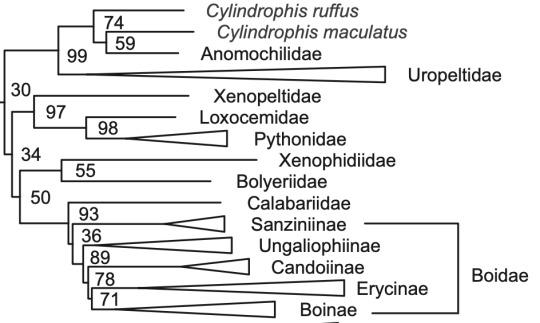
True pythons (Pythonidae) are sister to Loxocemidae (burrowing pythons), in turn sister to Xenopeltidae (sunbeam snakes)
On the other hand, Boidae in the broad sense (since very often treated as superfamily Booidea, with subfamilies treated as full families) is closest related to Calabariidae (Calabar 'python'). The relationships between Pythonidae+Loxocemidae+Xenopeltidae and Booidea+Calabariidae is not well resolved, and the Xenophidiidae and Bolyeriidae somehow get in the middle.
So, it is very likely that pythons and boas arrived at their morphological similarities rather independently. Which is especially impressive in lineages like Chondropython and Corallus, which are just unbelievably similar.
For other ramblings on a related topic, see this post about the lack of pythons in Madagascar
#snakes#animals#zoology#phylogeny#taxonomy#evolution#this ask is—and I shit you not—six years old#it is in kindergarten#it is about to start losing its baby teeth#it has a 2600 word expressive vocabulary#sorry anon#I am bad at things#anon#anonymous#answers by Mark
68 notes
·
View notes
Note
Actually I got curious,
What exactly are the differences between pythons and boas?
Pythons and boas are two major snake families! They're both fairly primitive families, and are known for both being non-venomous and having the largest snakes in the world among their members! They tend to fill similar niches, but there are a lot of cool differences, too!
Pythonidae, the python family, are all non-venomous and are found across Africa, Asia, and Australia. They are exclusively oviparous (lay eggs). They share a lot of primitive characteristics with boas, including a rigid lower jaw, a vestigial pelvic girdle with hind limbs visible as spurs, and a semi-functional left lung.
Aside from their range, though, which is primarily in the Old World, pythons are distinguished from boas by an extra bone in their skulls and a few extra teeth. In addition, they almost always have heat pits and heavily rely on them for hunting, with only two species in one genus (Aspidites, the "pitless wonders") lacking heat pits.

Boidae, the boa family, are found primarily in the Americas, but also have a few species in Africa, Asia, Europe, and a few Pacific Islands. Unlike pythons, they're typically oviviparous and give birth to live young! Boas have a much wider range than pythons, and their ranges are almost entirely mutually exclusive - it's rare to find boas and pythons in the same habitats.
Boas also don't rely on heat pits nearly to the extent that pythons do, and many species don't have them at all. When boas do have heat pits, they're located beside the scales, not set into them like they are with pythons.
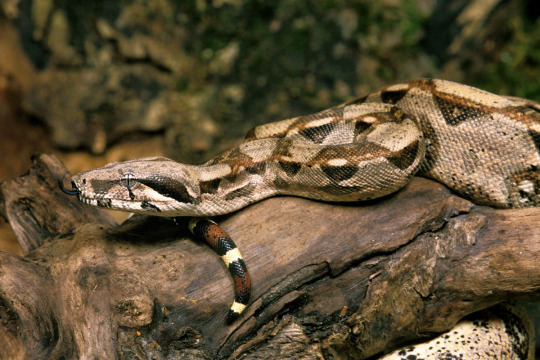
102 notes
·
View notes
Text
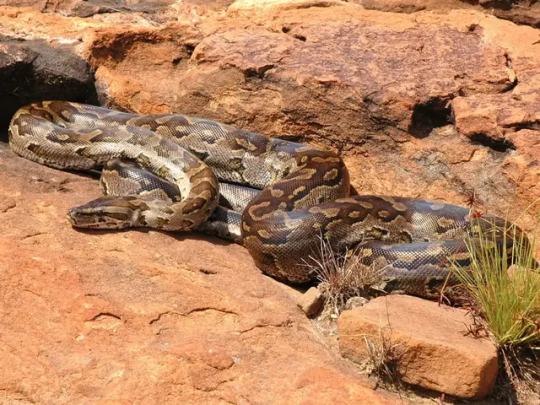
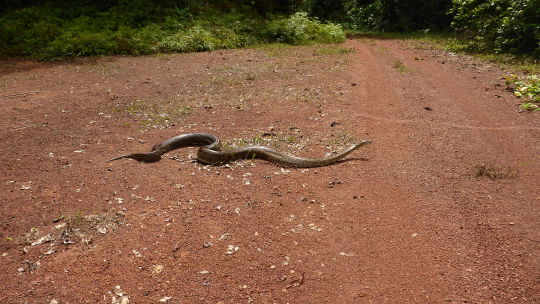

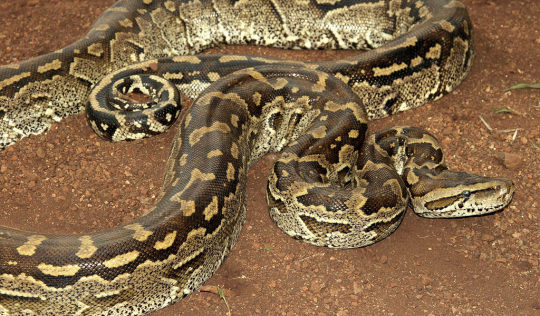

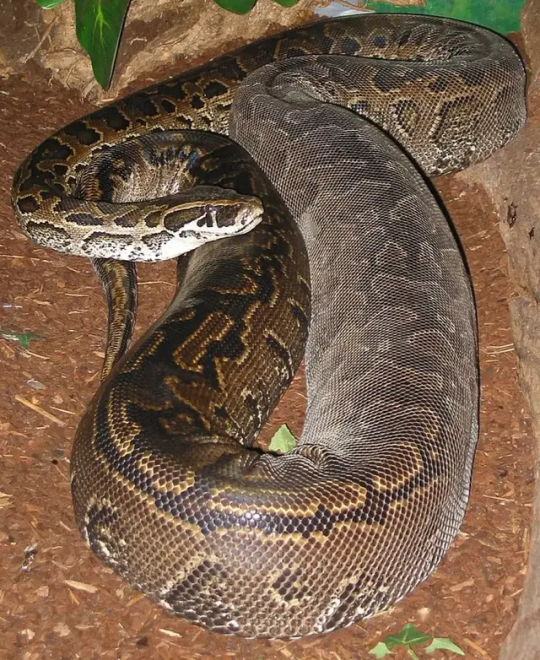
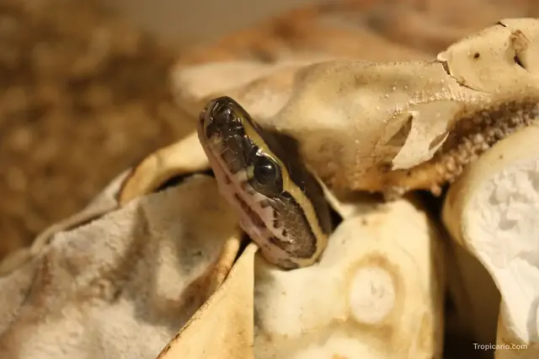
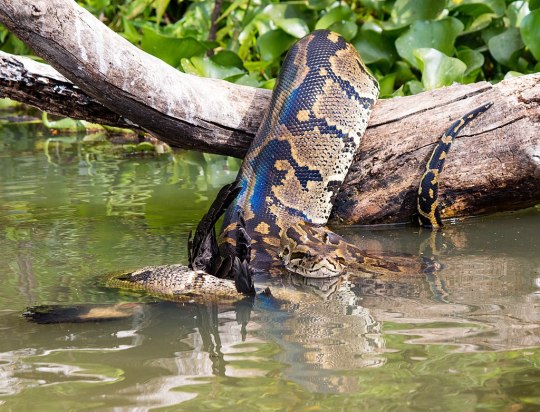

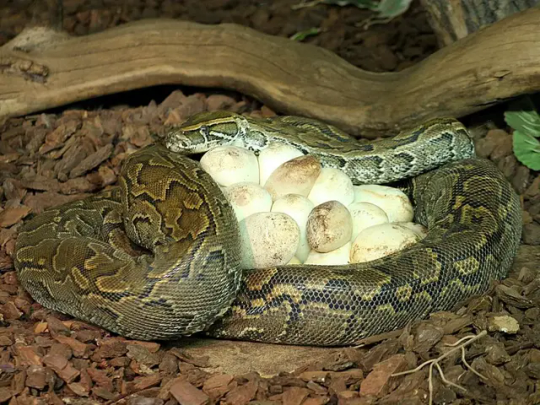
The Central African rock python (Python sebae) is a species of large snake in the family Pythonidae and one of the 10 living species in the genus Python, which is native throughout almost the whole of sub-Saharan Africa, from Senegal east to Ethiopia and Somalia and south to Namibia and South Africa and have become invasive in the florida everglades. Here they are found throughout a wide variety of habitats including including forest, wetlands, savanna, grassland, semidesert, and rocky areas. It is particularly associated with areas of permanent water, and is found on the edges of swamps, lakes, and rivers. They are a generally solitary non venomous species of constrictor which is known to feed upon fish, rodents, birds, monkeys, antelopes, bats, lizards, crocodiles, dogs, goats, sheep, pigs, jackals, hyenas, & big cats. On average Central African rock pythons reach around 9.8 to 16.4ft (3 to 5m) in length and 97 to 121 pounds (44 to 55kg) in weight, however individuals reaching up to 24.6ft (7.5m) and 214lbs (97kg) are not unheard of. African rock pythons have a relatively small, triangular head that is covered in irregular scales that are typically blackish to brownish-gray in color. The body is yellowish, gray-brown, or gray-green, with dark blotches that form a staircase-like pattern on the back. Belly scales are a white color with black specks producing a salt-and-peppery pattern. Mating occurs in the spring after which time the mother climbs inside an old animal burrow, termite mound, or cave and lay 20 to 100 hard-shelled, elongated eggs. The female shows a surprising level of maternal care not typical for snakes, coiling around the eggs, protecting them from predators, and possibly helping to incubate them, until they hatch around 90 days later. She then spends up to 2 weeks protecting and caring for the hatchlings. Under ideal conditions a central African rock python will reach sexual maturity at 3 to 5 years and live up to 30.
#pleistocene#pleistocene pride#pliestocene pride#pliestocene#cenozoic#snake#python#reptile#central african rock python#rock python#big snake
4 notes
·
View notes
Text
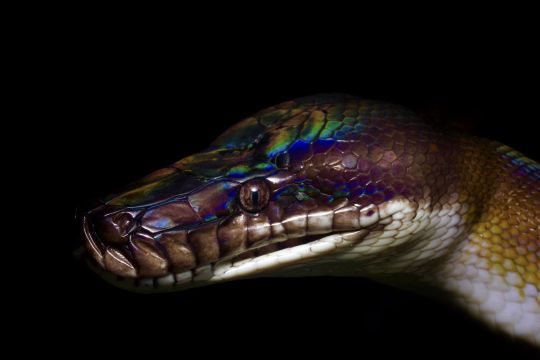
Northern White-lipped Python aka D'Albertis' Water Python (Leiopython albertisii), family Pythonidae, West Papua, New Guinea
photograph by Tom Williams
554 notes
·
View notes
Text

A pair of black-headed pythons (Aspidites melanocephalus) mating in Kimberly, Western Australia
by Melissa Bruton
#black headed python#pythons#snakes#reptiles#aspidites melanocephalus#aspidites#pythonidae#serpentes#squamata#reptilia#chordata#wildlife: australia#wildlife: oceania
342 notes
·
View notes
Text
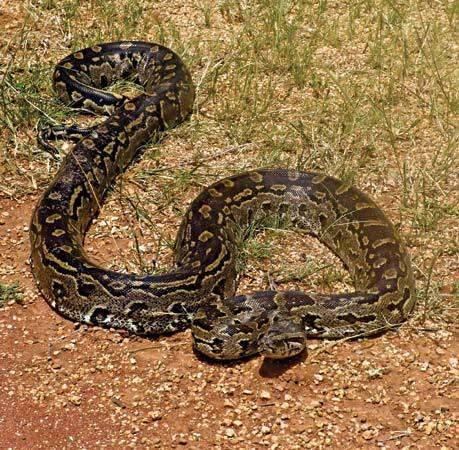
African rock python is a species of large constrictor snake in the family of Pythonidae.
The species is native to Africa. It is one of 10 living species in the genus Python. Africa's largest snake and one of the eight largest snake species in the world
African rock pythons have a thick body covered with colored blotches, often joining up in a broad, irregular stripe. Body markings vary between brown, olive, chestnut, and yellow, but fade to white on the underside.
The head of these snakes is triangular and marked on top with a dark brown “spear-head” outlined in buffy yellow.
African rock pythons are non-venomous and snakes they don’t have fangs.
The snake is widely feared, though it very rarely kills humans
African rock python’s lifespan is 20 – 30 years but the might live even longer in the wild.
You’ve probably heard that snakes have poor eyesight. This is true!
African rock pythons. They aren’t blind, but they don’t perceive much with their eyes; instead, they rely on a complex sensory organs in and around their face.
The tongues of African rock pythons are able to “smell” the surrounding environment. If a prey is nearby, their tongues will sense it.
African rock pythons have heat-sensing pits in their scales that
Helps them locate both predators and prey.
African rock pythons start to mate with each other when they’re around 3 – 5 years old.
African rock pythons are solitary creatures that prefer to live and hunt alone. The exception to this is the mating season; they’ll come together to breed, but it doesn’t last long, and males leave the females as soon as they start nesting.
African rock pythons are most active at night, especially when they’re trying to hunt.
2 notes
·
View notes
Photo

Gemga - Thonia Binari (they/them)
Thonia - derived from Pythonidae, the scientific name for pythons
Binari - Binary- as in, binary numbers
Quite the homebody
Would rather spend time with computers than people
Sticks to routines
13 notes
·
View notes
Note
What I found on the 1rst page of Googgle about Greek names for planets.
Astra Planeta (Αστρα Πλανητα / Astra Planêta); "Wandering Stars", "Planets" the Stellae Errantae)
//In Greco-Roman Classical Mythology, the Astra Planeta are brothers, and are five of Eos' and Astraeus' children, along with the Anemoi and Astraea, personifying the Classical planets (minus the Sun and the Moon (Eos' siblings), and the Earth (Gaia)). Uranus, Neptune and Pluto are not included, as they are invisible to the naked eye and were thus unknown to the ancient Hellenic peoples. //
There is an interesting thing that you should know to understand why I include this information here. In my research on Boiling Isles, there was some kind of celestial war between "Titans" and "Star people" deityies. Both sides have a religeous cults dedicated to them. Most of the followers are witches.
Since witches that steal human teeth are from Mars then it means they serve "star people" and therefore the "Titans" cult is their opposite. Maybe we could find some temporary alligment with "tolerable" witches that oppose this sky alien race. (But the Titan look like litteral Satan so that is questionable.)
Mercury
// Original name is stilbon (Στίλβων). In the ancient Greek religion it is the sky god of Hermaon and one of the Astra Planeta. The word, Stilbon, means shining. //
The name sounds like "stillborn" missing "l" and "r". Maybe we could get a date out of this.. L = 12 (!!!), R = 18. I have 0 ideas.
Venus
// Hesperus (/ˈhɛspərəs/; Ἕσπερος, Hésperos) is the Evening Star, the planet Venus in the evening. Hesperus' Roman equivalent is Vesper ("evening", "supper", "evening star", "west"). Also called Εωσφόρος / Φωσφορος //
Dont see anything in particular yet.. I see only "Herpies" and "Hes-per-us" aka "He is per us"
Mars
//Pyroeis (Πυρόεις) in ancient Greek religion is the god of the wandering star (Aster Planetos / Astra Planeta) Areios. He is also known as Mesonyx (Μεσονυξ; "midnight").//
Bonus: I see Me-sony-x hidden message. The company is definetly connected to demons-! Maybe it is the one sending the teeth on Mars using teleportation tech. Or magic even.
Saturn
// Phaethon (Φαέθων), means "radiant" (from the verb φαέθω, meaning "to shine"). This name could be understood as, "the shining/radiant (one)". Ultimately the word derives from φάος, phaos, the Greek word for light. Phaethon, also spelled Phaëthon. //
I think the easiest connection we can find is to Photons.. but the truth cant be that overly simple. Phaos sounds like chaos, Phaethon sounds like Python (Pythonidae). So what I am taking from this is that Saturn is a capital for Lisard people Empire. And they could be behind the egyptian pyramids. Probably they hyde a good amount of radiation inside of them, that was prodused by the mummies.
--Your №1 Fan
BUT OF COURSE......... IT ALL MAKES SENSE.
THIS WHOLE TIME. THE ENTIRE SOLAR SYSTEM HAS BEEN APART OF THIS.
NASA IS LYING TO US AND THIS IS OUR PROOF.
You're absolutely right. Of course, the rings on saturn are the roads satelliates for communication from lizards to demons.
The pyramids... the radiation.... mummy energy... WE'RE CRACKIN THIS THING WIDE OPEN.
4 notes
·
View notes
Photo

Become a Full Stack Python Expert in just 3 months…
If you’re looking for that perfect opportunity to make it big, join our career changing Python Program
Attend a Free Demo on Python and find the Right Python Course to fit your Programming Needs.
We have both Offline and Online Training.
Enroll now for FREE Demo on 27th August
2022
Contact us: 8106961963 (Teja)
#python#pythons#pythoncode#pythonregius#pythonsofinstagram#pythonbag#pythonskin#pythonprogramminglanguage#pythonleather#pythonclutch#pythondeveloper#pythonsofig#pythonbags#pythonista#pythonjacket#pythonprogramming#python3#pythonlanguage#pythonidae#pythonleejackson#pythonbelt#pythonmorph#pythontherider#pythonshoes#pythonchallenge#pythoncurtus#pythonsunlimited#pythonboots#pythonsofinsta#pythonroyal
0 notes
Photo

Become a Full Stack Python Expert in just 3 months…
If you’re looking for that perfect opportunity to make it big, join our career changing Python Program
Attend a Free Demo on Python and find the Right Python Course to fit your Programming Needs.
We have both Offline and Online Training.
Enroll now for the new batch starts on 27th Aug 2022
Contact us: 81437 41509
#python#pythons#pythoncode#pythonregius#pythonsofinstagram#pythonbag#pythonskin#pythonprogramminglanguage#pythonleather#pythonclutch#pythondeveloper#pythonsofig#pythonbags#pythonista#pythonjacket#pythonprogramming#python3#pythonlanguage#pythonidae#pythonleejackson#pythonbelt#pythonmorph#pythontherider#pythonshoes#pythonchallenge#pythoncurtus#pythonsunlimited#pythonboots#pythonsofinsta#pythonroyal
0 notes